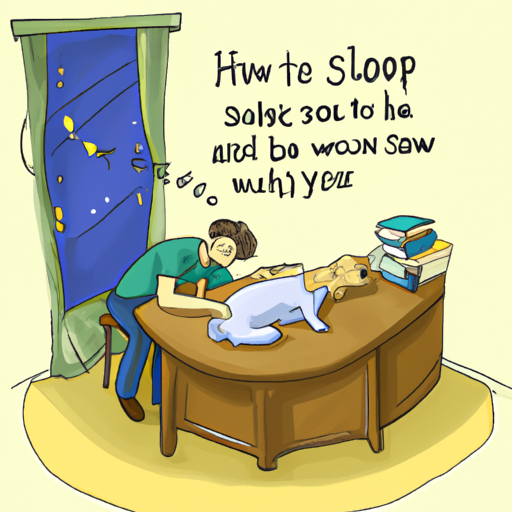As a dedicated caregiver, ensuring your dog’s health is a priority. Among the essential aspects of a dog’s well-being is sleep. This guide will take you through the journey of understanding your dog’s sleep patterns and giving you tips on how to make your dog sleep.
1. Understanding Your Dog’s Sleep Cycle
Just like humans, dogs have sleep cycles. Dogs spend about 50% of their day sleeping, 30% awake but lounging, and just 20% being active. Puppies and older dogs need even more sleep. Understanding your dog’s sleep pattern will help you identify any potential problems early.
Table 1: Typical Dog Sleep Patterns
| Age | Sleep Hours |
|---|---|
| Puppy | 18-20 |
| Adult Dog | 12-14 |
| Senior Dog | 14-18 |
2. Setting Up a Comfortable Sleep Environment
A comfortable sleep environment is crucial for your dog’s quality sleep. This includes a quiet, dark place with a comfortable temperature. If possible, provide a dog bed or blanket for extra comfort.
- Quiet: Dogs are sensitive to noise. Make sure their sleep area is away from loud noises.
- Dark: Dogs sleep better in a dark place. Try to dim the lights or use curtains to block out light.
- Temperature: Dogs sleep better in a cool environment. Avoid placing their bed near radiators or direct sunlight.
3. Establishing a Sleep Routine
Dogs thrive on routine. Establishing a sleep routine will signal to your dog that it’s time to rest. This could involve specific activities like a last walk of the day, a goodnight treat, or simply turning off the lights.
- Walk: A walk before bedtime can help tire your dog out.
- Treat: A goodnight treat can be a positive reinforcement for going to bed.
- Lighting: Dimming the lights can signal to your dog that it’s time to sleep.
4. Ensuring Proper Exercise and Diet
A well-exercised dog is a sleepy dog. Regular exercise and a balanced diet are important for your dog’s overall health and sleep quality. Avoid feeding your dog too close to bedtime as it may cause discomfort and disrupt sleep.
5. Dealing with Sleep Disorders
Just like humans, dogs can suffer from sleep disorders. If your dog has trouble sleeping, it’s important to consult a vet. They can diagnose any potential health issues and suggest treatment options.
6. Using Natural Sleep Aids
Sometimes, dogs need a little extra help to fall asleep. Natural sleep aids like chamomile, melatonin, or calming music can help. However, it’s always best to consult with your vet before introducing any new supplements or changes to your dog’s routine.
7. Training Your Dog to Sleep
Training your dog to follow a sleep routine can be a challenging task. However, with patience and consistency, your dog will eventually learn to associate certain signals with bedtime and react accordingly.
8. Frequently Asked Questions (FAQ)
Q: How many hours should my dog sleep?
A: On average, adult dogs need 12-14 hours of sleep a day. Puppies and older dogs need even more, around 18-20 hours.
Q: Is it normal for my dog to sleep all day?
A: While dogs do spend a good portion of their day sleeping, excessive sleep could be a sign of a health issue. If you notice a sudden change in your dog’s sleep pattern, it’s best to consult a vet.
Q: Can I train my dog to sleep at night?
A: Yes, establishing a sleep routine is a great way to train your dog to sleep at night. This could involve a last walk of the day, a goodnight treat, or dimming the lights.
Q: Can I use sleep aids for my dog?
A: Yes, natural sleep aids like chamomile or melatonin can help. However, always consult with your vet before introducing any new supplements to your dog’s routine.
Remember, every dog is unique. What works for one dog may not work for another. Always be patient and consult with a vet if you have any concerns about your dog’s sleep. Sleep is crucial for your dog’s health and well-being, and as a caregiver, it’s your responsibility to ensure they get the rest they need.



